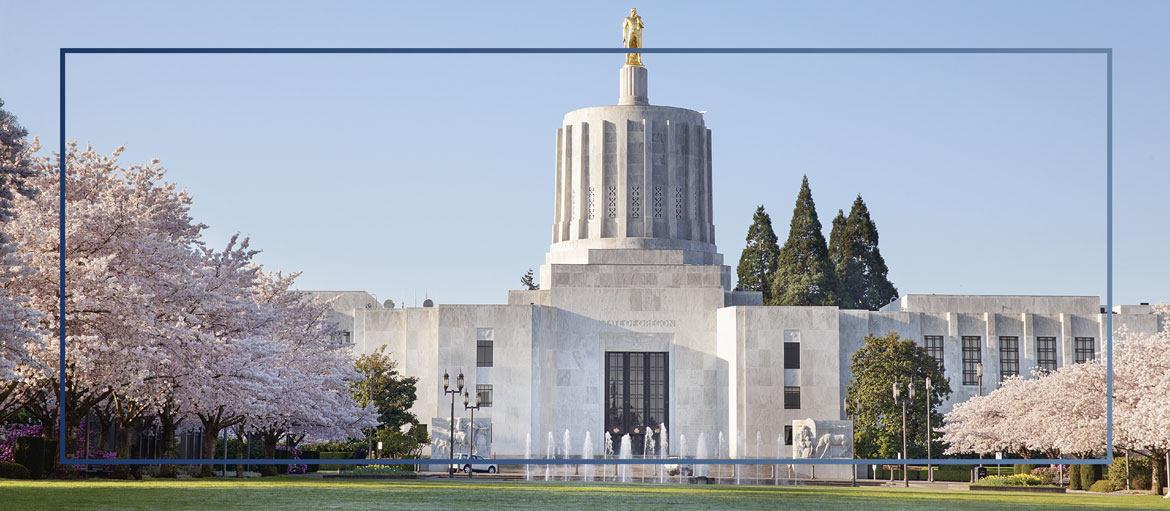Report 2025-14

Objective
The objective of this audit was to assess how the Oregon Health Authority (OHA) coordinates behavioral health crisis systems for adults and children.
Scope
The audit focused on efforts made by OHA to coordinate the state’s behavioral health crisis system that incorporates the new federal 988 program for serving all individuals.
Why this audit is important
For every $1 invested in preventing and treating adolescent mental disorders and suicide, there is a $24 return in health and economic benefits over 80 years.
In 2022, 14.6% of 11th grade students, 11.6% of 8th grade students, and 7.2% of 6th grade students in Oregon reported serious thoughts of suicide.
In 2020, the economic impact of major depressive disorder in adults in the U.S. was estimated to be $326 billion.
Behavioral health programs help the people of Oregon achieve physical, mental, and social well-being.
What we found
Twenty-three years of gaps in Oregon’s health systems data make it difficult to plan for behavioral health crises and evaluate the current response system.
Existing systems are fragmented, and the implementation of a new data system keeps getting delayed. OHA urgently needs to fully implement its strategic plan and work to address fragmentation and coordination of new data systems.
Funding for the state’s behavioral health crisis response system is inadequate.
Crucial elements are underfunded or unfunded. Following the passage of the National Suicide Hotline Designation Act of 2020, Oregon adopted the Crisis Now model, which consists of three main pillars: the hotline, mobile response, and crisis centers. While funding was established for the hotline, less funding was provided for mobile response, and no funding was dedicated for crisis centers. The state needs to adequately fund all three tiers of the system to deliver Oregonians the support they need.
The lack of long-term strategic planning undermines progress on behavioral health in Oregon.
OHA made progress on this with the August 2024 Strategic Plan; however, work remains to align the operations of the Behavioral Health Division with this overarching strategy.
Legal and jurisdictional challenges limit Tribal Nations’ ability to provide timely, effective behavioral health interventions for their communities.
To ensure equitable access to care for American Indian and Alaska Native populations, OHA will need to strengthen collaboration with Tribal partners and address structural barriers within the behavioral health crisis framework.
What we recommend
-
Collaborate with behavioral health crisis partners, such as CMHPs and contractors, to better understand the nature and extent of system data, and pursue measures needed for consistent implementation.
Agency response:
Agree
Target completion date: July 31, 2026 -
Examine and document fragmented internal coordination between Behavioral Health, Fiscal and Operations, and Health Policy and Analytics divisions with respect to data necessary for informed decision making and determine if resources are available for a data analyst embedded within the 988 and Behavioral Health Crisis unit.
Agency response:
Agree
Target completion date: June 30, 2026 -
Develop procedures to aggregate and analyze 988 lifeline call data.
Agency response:
Agree
Target completion date: July 31, 2026 -
Develop a comprehensive funding strategy for all components of the Crisis Now framework.
Agency response:
Agree
Target completion date: June 30, 2027 -
Review funding parity for the children and family’s crisis system, including Mobile Response and Stabilization Services, and develop plans to address gaps where necessary.
Agency response:
Agree
Target completion date: June 30, 2027 -
Coordinate with the Legislature as necessary to provide funding for lapsed behavioral health workforce incentive programs.
Agency response:
Agree
Target completion date: June 30, 2025 -
Collaborate with the Legislature, Coordinated Care Organizations, Department of Consumer and Business Services, and insurance providers to develop a comprehensive model that ensures private insurers cover mobile crisis response and stabilization services like leading models from other states.
Agency response:
Agree
Target completion date: June 30, 2027 -
Develop a behavioral health division strategy aligned with the August 2024 agency strategic plan.
Agency response:
Agree
Target completion date: October 31, 2025 -
Assess the resources needed to appropriately coordinate the developed strategy and communicate unmet need in future funding requests.
Agency response:
Agree
Target completion date: June 30, 2026 -
Monitor, evaluate, and report progress to interested parties, such as the Behavioral Health Crisis System Advisory Committee.
Agency response:
Agree
Target completion date: June 30, 2025 -
Continue to work with OHA Tribal Affairs to explore culturally responsive services to American Indian or Alaskan Natives living in Oregon and collaborate on any legislative barriers that may hinder services.
Agency response:
Agree
Target completion date: June 30, 2027 -
Incorporate Tribal inclusivity into the behavioral crisis framework, such as support for Tribal members who dial the 988 Lifeline, mobile crisis stabilization services, and collaborating with Tribes on high acuity mobile crisis cases that may lead to civil commitment investigations.
Agency response:
Agree
Target completion date: June 30, 2027
Agency Response
OHA agreed with all of our recommendations. The response can be found at the end of the report.
